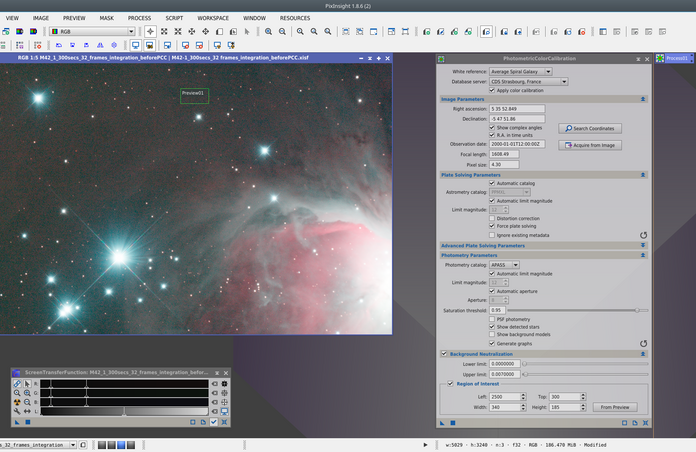Color in Astrophotography pictures

Long is the debate whether color should be artistic or scientifically accurate.
The census is of course, whatever you want it to be. Your images and their interpretation are dictated solely by your choice. Art spans the realm from realistic, to stylistic, to way-out-there. Scientifically accurate is going to depend upon a lot more details than just color. What matter is your end objective.
We often struggle with trying to get to a starting point. What should the color look like?
PixInsight has a magical solution. Process>ColorCalibration>PhotometricColorCalibration.
Much like the astrometric data used for star alignment, there is a catalog that contains the spectral color for each of the identified stars in the database.
The 7 Main Spectral Types of Stars:
O (Blue) ( 10 Lacerta)
B (Blue) ( Rigel)
A (Blue) ( Sirius)
F (Blue/White) ( Procyon)
G (White/Yellow) ( Sun)
K (Orange/Red) ( Arcturus)
M (Red) ( Betelgeuse)
Photometric Color Calibration will adjust the WHITE BALANCE of the image to a target star type as selected in the dialog.
Generally, using the default value of “Average Spiral Galaxy” will average all the star colors.
If you choose to select a star type, keep in mind that it forces that to be the white balance reference. Therefore, choosing a G-type star (yellow) will force the rest of the image towards blue.
The Photometric Color Calibration works for both broadband and narrowband filters. Keep in mind, the due to the preponderance of the Ha signal mapped to Green in narrowband, you will still have to neutralize that with the SCNR process.
What you are left with is that the stars are generally white and that can help you better visualize observed colors.
As always, there is great documentation available at:
PixInsight — Photometry-Based Color Calibration
#### 15APR2021
This blog post was originally published in our Telescope Live Community.
The Community represents Telescope Live's virtual living room, where people exchange ideas and questions around astrophotography and astronomy.
Join the conversation now to find out more about astrophotography and to improve your observation and post-processing skills!
